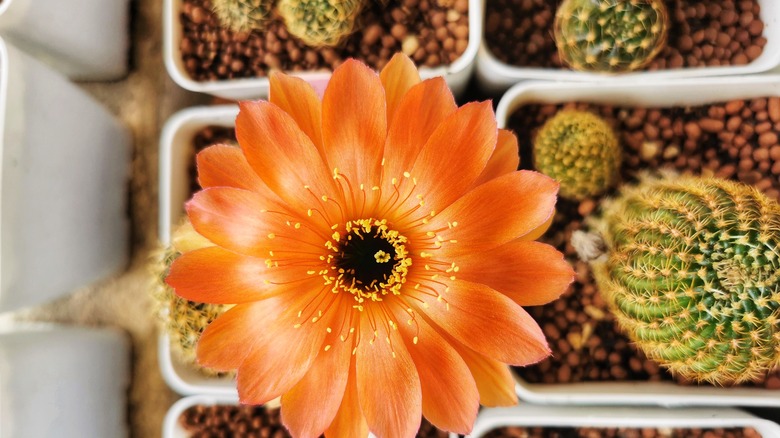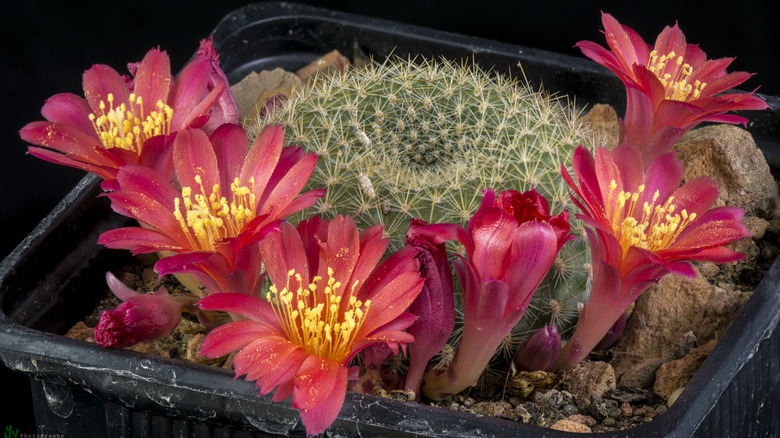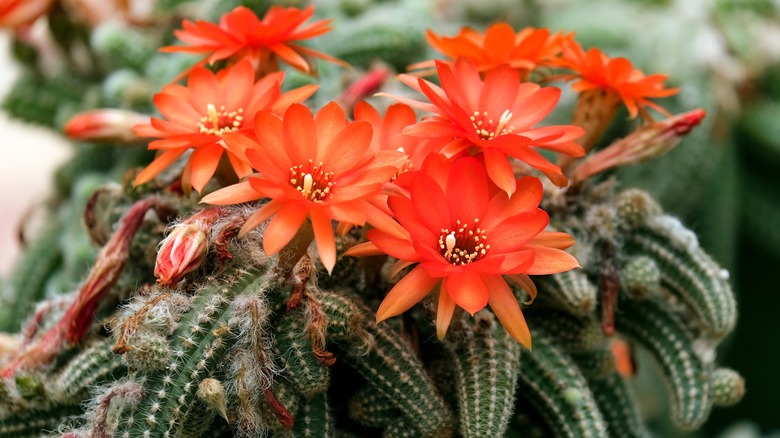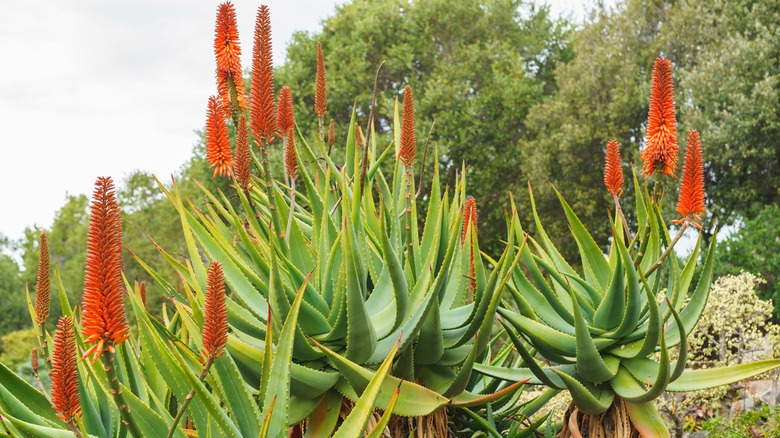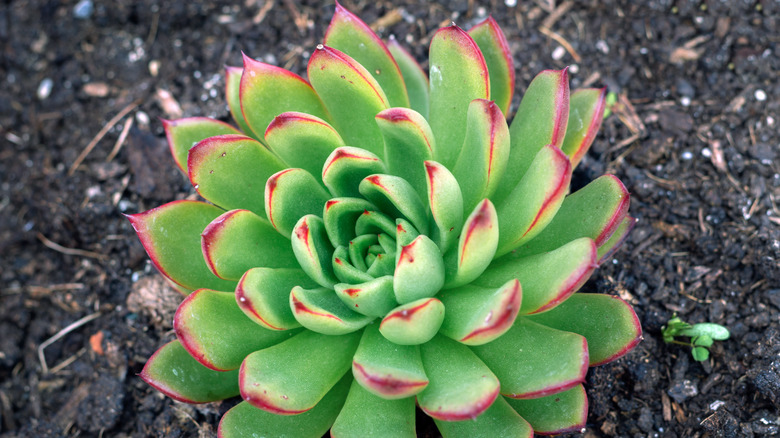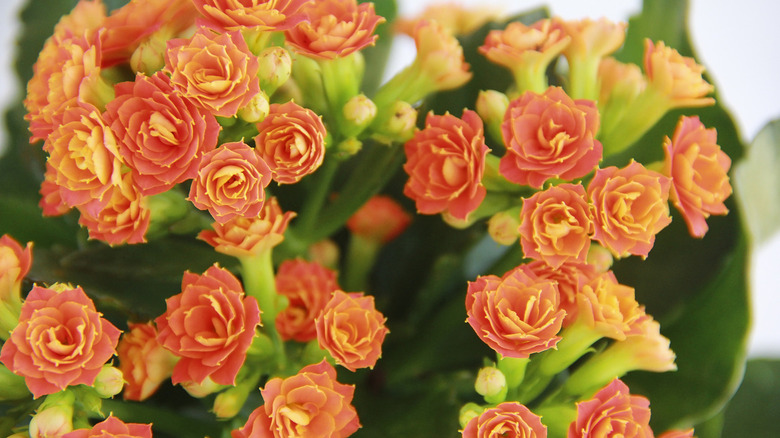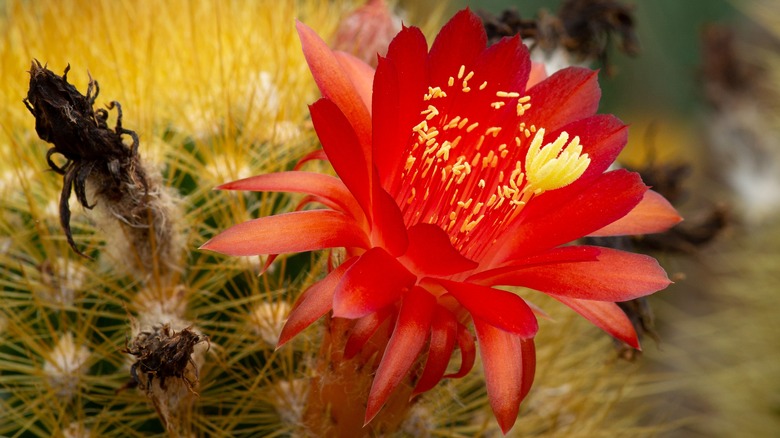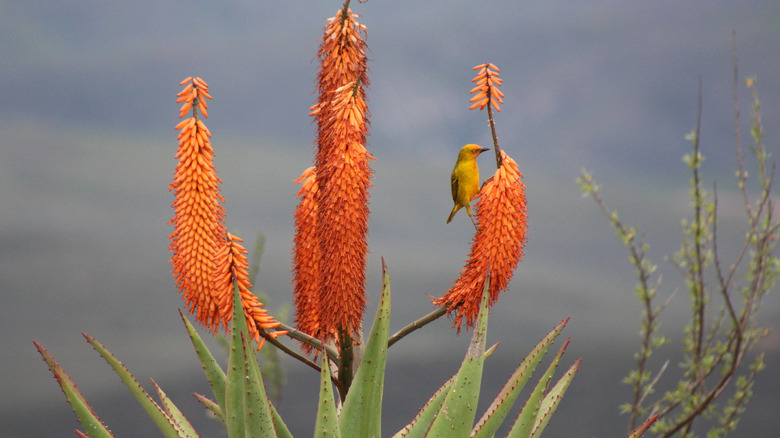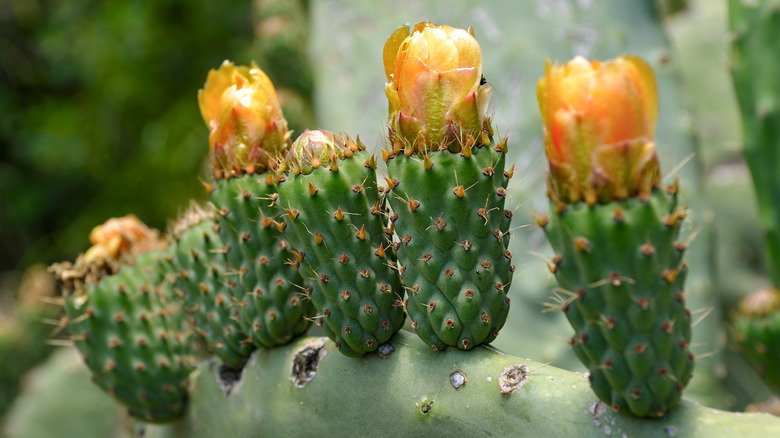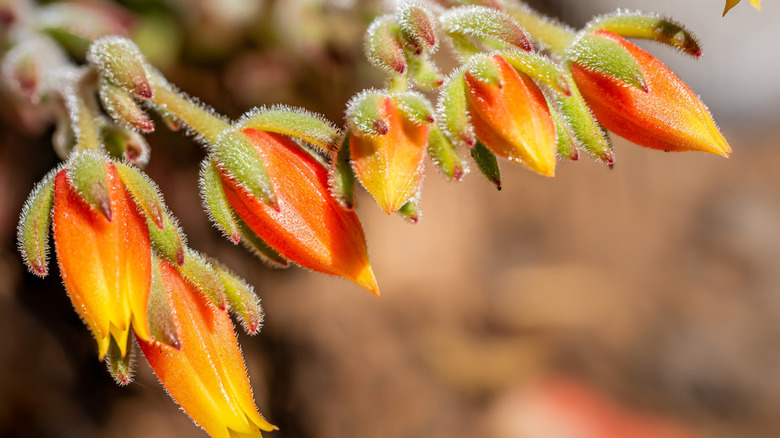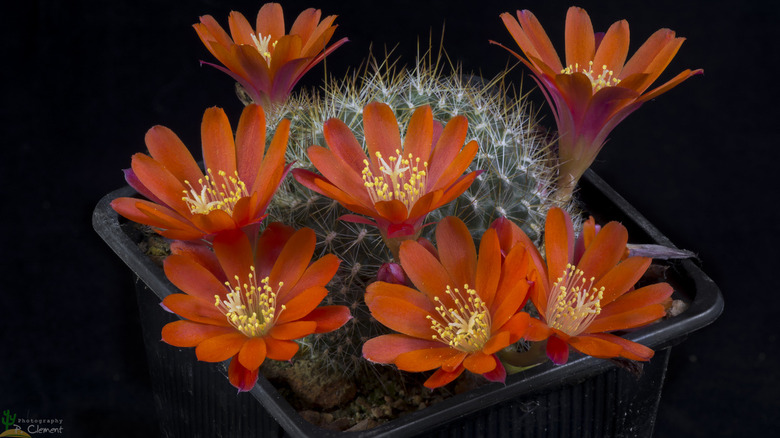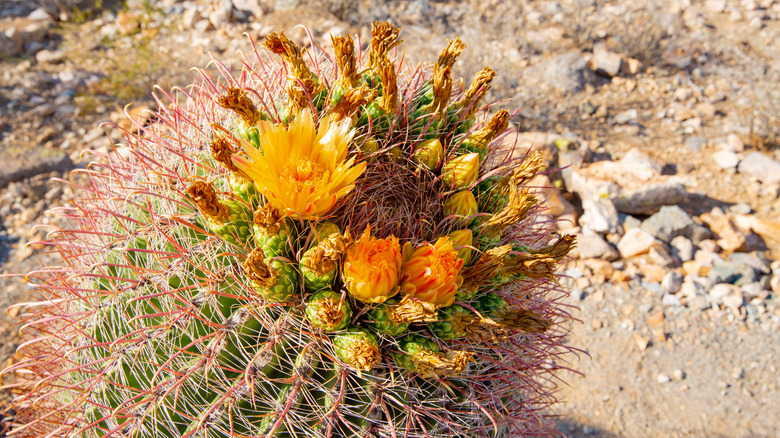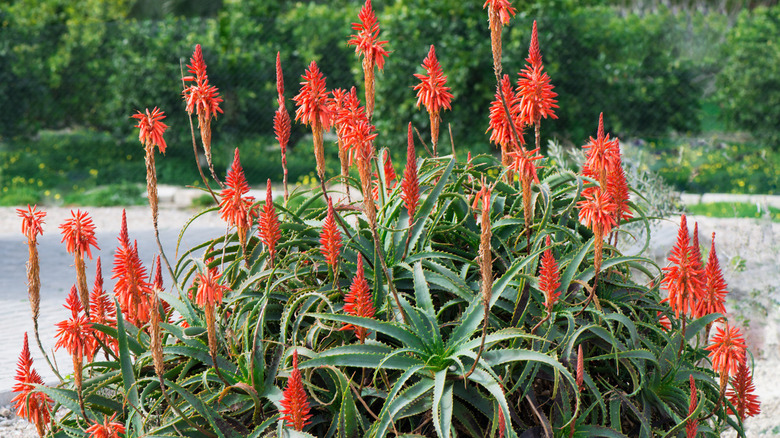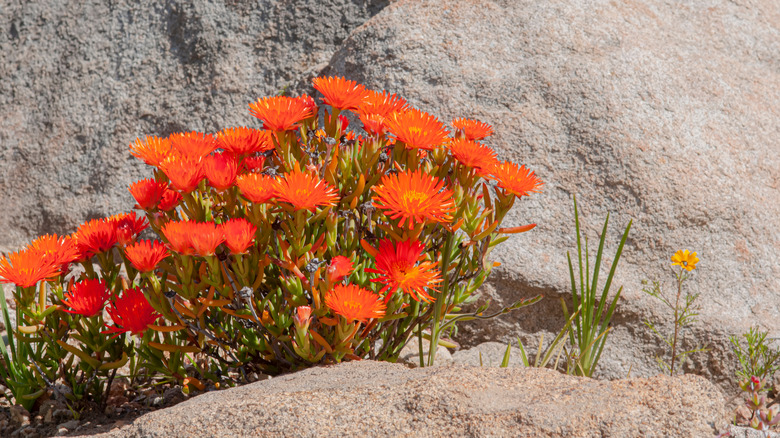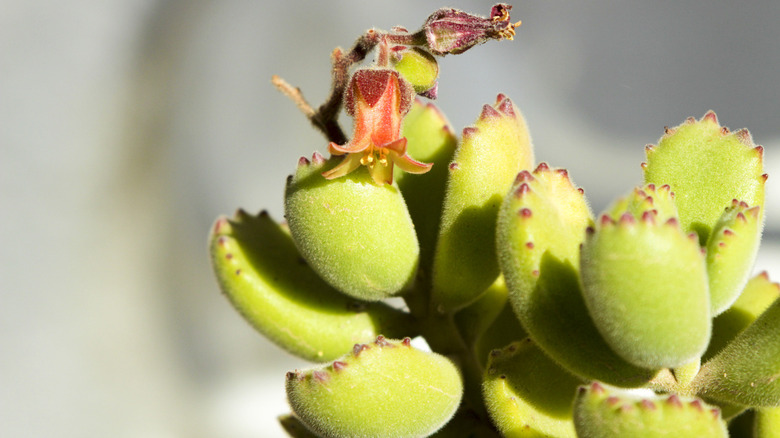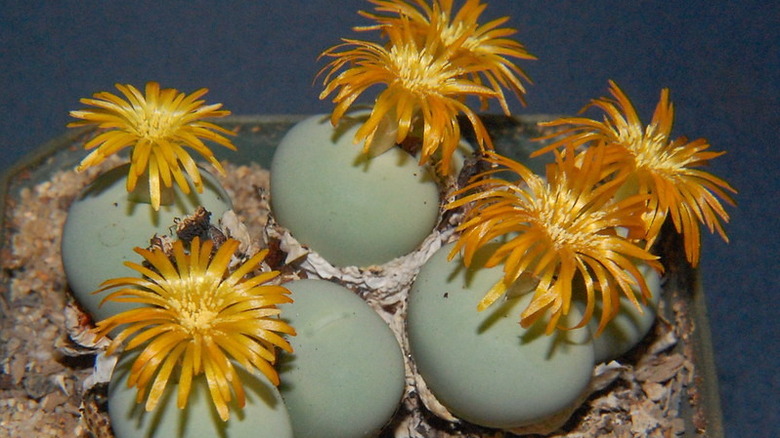15 Succulents That Bloom With Cute Orange Flowers
Growing succulents in your yard or indoors is growing in popularity, particularly among millennials. In fact, a report from Verified Market Research done in 2019 valued the succulent plant industry at a staggering $3.18 billion and is projected to grow even bigger in years to come. It doesn't come as a surprise that these plants are slowly becoming a gardener's favorite; they come with plenty of advantages that everyone is interested in. While the most common advantage of having succulents is their drought tolerance, some also provide aesthetic value. This is particularly true for flowering cultivars.
Succulents that bloom in orange flowers don't come by too often, and a quick search online will show you just how rare they are. However, this doesn't mean that they don't exist; if you know what you are looking for, you can easily get one for your indoor or even outdoor space. Having said that, take inspiration from the following stunning succulents that bloom with orange flowers.
1. Orange snowball
The orange snowball (Rebutia muscula), is a good option to consider, particularly if you are looking for an indoor succulent. It is round in shape and also covered with white fur-like fibers, hence the name (via Giromagi Cactus and Succulents). The fur covering provides a beautiful contrast, especially when this cactus blooms into beautiful orange flowers. Similar to most succulents, orange snowball is relatively easy to care for.
Bloom Season: Spring, early summer
USDA Growing Zone: 9-11
Growing Conditions: Full sun
Soil Type: Well-draining
Size: Up to 6 inches tall and wide
2. Peanut cactus
The Echinopsis chamaecereus, known as the peanut cactus, is a small, low-growing cultivar popular as an indoor plant. It features finger-like stems that take the shape of fuzzy peanuts. The stems also have a trailing habit which makes them a good option for hanging baskets. You will love the beautiful display of orange blooms that appear during the spring or late summer (via Plant Care Today).
Bloom Season: Spring, early summer
USDA Growing Zone: 10-11
Growing Conditions: Full sun
Soil Type: Well-draining soil
Size: Up to 6 inches tall and wide
3. Mountain aloe
If you love how large succulents look, then the mountain aloe (Aloe marlothii) is a good option for you. Hailing from South Africa, this succulent features reddish brown spines that form at the tip of the long, green fleshy leaves. It blooms with tubular reddish-orange flowers that form a beautiful display in your garden (via the South African National Biodiversity Institute). It is best planted as a centerpiece in the garden.
Bloom Season: Fall to winter
USDA Growing Zone: 9-12
Growing Conditions: Full sun
Soil Type: Well-draining soil
Size: 8-10 feet tall and 4-6 feet wide
4. Red echeveria
The red echeveria (Echeveria 'Pulv-Oliver') is a small attractive evergreen succulent popular for its velvet dark green leaves with red edges. When the season is right, this low-growing plant shoots up a flowering stem with bright, attractive flowers. Although the fleshy foliage looks good, this particular variety is typically grown for its beautiful orange flowers. World of Succulents advises against allowing water to sit on the rosette foliage.
Bloom Season: Spring, summer
USDA Growing Zone: 9-12
Growing Conditions: Full to partial
Soil Type: Well-draining soil
Size: Up to 1 foot tall and 1-2 feet wide
5. Flowering kalanchoe
Care for a succulent with long-lasting blooms? Consider the flowering kalanchoe, scientifically known as Kalanchoe blossfeldiana. It is a rather small potted indoor plant known for its showy foliage that may appear in different colors, including orange. It requires little to no maintenance and is perfect for beginner plant parents or even children (via Clemson Cooperative Extension). This succulent has the capacity to bloom continuously when provided with enough sunlight.
Bloom Season: Varies
USDA Growing Zone: 10-12
Growing Conditions: Full to partial
Soil Type: Sandy, well-draining soil
Size: 6-8 inches tall and wide
6. Cleistocactus icosagonus
Popular in South America, the Cleistocactus icosagonus cactus variety is ideal for your rock garden. It features long cylindrical-stemmed plants with golden-yellow spines covering the entire stem. The stalks often clamp together, creating a cluster of short cylinders that beautify any rock garden. When the conditions are right, this succulent will reward you with orange tubular flowers that grow right on the stems, mentions The Ruth Bancroft Garden & Nursery.
Bloom Season: Summer
USDA Growing Zone: 9-11
Growing Conditions: Full to partial
Soil Type: Well-draining soil
Size: Up to 2 feet tall and 5 inches thick
7. Bitter aloe
Often confused with the mountain aloe, bitter aloe (Aloe ferox) is another popular succulent from South Africa. It features thick, green, fleshy leaves that grow in a rosette, and can get quite tall when grown outdoors, especially in the right conditions (via the South African National Biodiversity Institute). During summer, it blooms in bright orange or yellow flowers, emerging from the center of the rosette. This plant thrives on neglect, which is perfect for new plant parents.
Bloom Season: Summer
USDA Growing Zone: 9-12
Growing Conditions: Full sun
Soil Type: Well-draining soil
Size: Up to 10 feet tall
8. Desert gem
A good plant choice for xeriscaping is the desert gem (Opuntia rufida). This small succulent with fleshy leaves changes colors from purple to a shade of blue as the plant ages, mentions Arizona State University. Generally, the desert gem is quite tolerant of harsh conditions, but you will need to provide water once in a while. They love the full sun so be sure to provide enough sunshine if you choose to grow indoors.
Bloom Season: Spring
USDA Growing Zone: 8-11
Growing Conditions: Full sun
Soil Type: Well-draining soil
Size: Up to 10 inches tall
9. Woolly rose
The woolly rose (Echeveria 'Doris Taylor') is one unique succulent that does well indoors but also out in the garden. The thick fleshy leaves of this plant are delicately covered with white fur, giving it a fuzzy appearance. Unlike other hardy succulents, this particular type doesn't thrive on neglect. Be sure to provide the woolly rose with adequate sunlight and shade in the afternoon, advises Succulents and Sunshine.
Bloom Season: Spring to fall
USDA Growing Zone: 9-11
Growing Conditions: Full sun to partial shade
Soil Type: Well-drained soil
Size: 5 inches tall and 8 inches wide
10. Crown cactus
The crown cactus (Rebutia fiebrigii) is one of the easiest to care for plants, ideal for children and novice plant parents. Unlike other succulents, the crown cactus will bloom frequently and as early as within three years. They are loved for their ornamental value thanks to their bright orange blooms that emerge from the base of the plant or halfway up the stem, mentions the World of Succulents.
Bloom Season: Mid spring
USDA Growing Zone: 9-11
Growing Conditions: Full sun
Soil Type: Well-draining soil
Size: 1-3 inches tall and wide
11. Compass barrel cactus
If you are looking for a large orange-blooming succulent to grow in the garden, look no further than the compass barrel cactus (Ferocactus cylindraceus). This peculiar plant that leans towards the south as it ages can grow quite tall and tolerates the harshest of conditions. While it doesn't have a lot of needs, the South Nevada Water Authority cautions against overwatering to prevent rotting.
Bloom Season: Summer
USDA Growing Zone: 9-11
Growing Conditions: Full sun
Soil Type: Well-draining soil
Size: Up to 8 feet tall and 2 feet wide
12. Candelabra aloe
Candelabra aloe (Aloe arborescens) is an outdoor stunner because of two things. First, the fleshy foliage with sprawling growth behavior is a delight to the eyes. Second, because of the orange flower that resembles a flame. Candelabra aloe is grown purposely for its ornamental value and is best planted as a centerpiece. Other than the aesthetics, this cultivar is also grown for its medicinal properties (via the South African National Biodiversity Institute).
Bloom Season: Late fall to winter
USDA Growing Zone: 9-11
Growing Conditions: Full sun
Soil Type: Loamy soil
Size: 6-9 feet tall and wide
13. Orange ice plant
The orange ice plant (Lampranthus aurantiacus) is a warm-weather perennial that promises to come back every year. Its name is coined from the small hairs on the plant's branches that reflect light in an ice-like fashion. Other than the orange flowering variety, several other cultivars bloom in different colored flowers, like purple, per World of Succulents.
Bloom Season: Spring, summer, fall
USDA Growing Zone: 6-10
Growing Conditions: Full sun
Soil Type: Sandy, well-draining soil
Size: 3-6 inches tall and 12-24 inches wide
14. Bear paw
The bear paw (Cotyledon tomentosa) is among the most adorable succulents for indoor or garden use. It features thick fleshy leaves with sharp dark red edges that closely resemble a bear claw. Unlike other succulents, this cultivar loves shaded regions of the house or garden with limited direct sunshine. With the right care and maintenance, it will grace your space with bright orange-red flowers (via Succulents and Sunshine).
Bloom Season: Spring
USDA Growing Zone: 9-11
Growing Conditions: Partial sun exposure
Soil Type: Well-draining
Size: Up to 12 inches tall and 24 inches wide
15. Marble button
If you are a fan of small, low-growing succulents, then consider getting the marble button plant (Conophytum calucus). This unique stemless succulent is spherical in shape and forms clamps as it ages. The spotless pale green leaves are a delight to look at since they closely resemble marble. Moreover, marble button is not only easy to care for but will also reward you with orange flowers when the conditions are right, mentions Succulents Network.
Bloom Season: Fall
USDA Growing Zone: 10-11
Growing Conditions: Full sun
Soil Type: Well-draining
Size: Up to 12 inches tall and 24 inches wide
